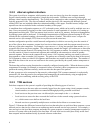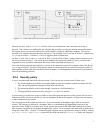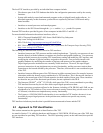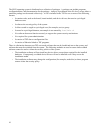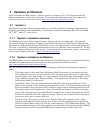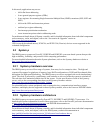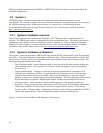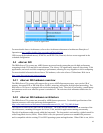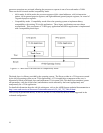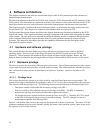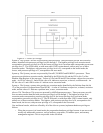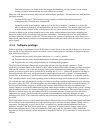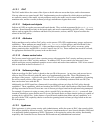
USB (except keyboard and mouse), PCMCIA, and IEEE 1394 (Firewire) devices are not supported in the
evaluated configuration.
3.3 System z
The IBM System z is designed and optimized for high-performance data and transaction serving
requirements. On a System z system, Linux can run on native hardware, in a logical partition, or as a guest of
the z/VM® operating system. SLES runs on System z as a guest of the z/VM Operating System.
For more detailed information about the System z hardware, refer to the System z hardware website at
http://www.ibm.com/systems/z/.
3.3.1 System z hardware overview
The System z hardware runs z/Architecture™ and the S/390™ Enterprise Server Architecture (ESA)
software. The IBM System z server is equipped with a real-time hardware clock. The clock is powered by a
small battery, and continues to tick even when the system is switched off. The real-time clock maintains
reliable time for the system. For a more detailed overview of the System z hardware models, or detailed
information about specific models, refer to the http://www.ibm.com/systems/z/hardware/ site.
3.3.2 System z hardware architecture
The System z servers are powered by IBM’s multi-chip module (MCM), which contains up to 20 processing
units (PUs). These processing units contain the z/Architecture logic. There are three modes in which Linux
can be run on a System z server: native hardware mode, logical partition mode, and z/VM guest mode. The
following paragraphs describe these modes.
• Native hardware mode: In native hardware mode, Linux can run on the entire machine without any
other operating system. Linux controls all I/O devices and needs support for their corresponding
device drivers.
• Logical partition mode: A System z system can be logically partitioned into a maximum of 30
separate Logical Partitions (LPARs). A single System z server can then host the z/OS operating
system in one partition, and Linux in another. Devices can be dedicated to a particular logical
partition, or they can be shared among several logical partitions. The Linux operating system controls
devices allocated to its partition, and thus needs support for their corresponding device drivers.
• z/VM guest mode: Linux can run in a virtual machine using the z/VM operating system as a
hypervisor. The hypervisor provides virtualization of CPU processors, I/O subsystems, and memory.
In this mode, hundreds of Linux instances can run on a single System z system. SLES runs on
System z in the z/VM guest mode. Virtualization of devices in the z/VM guest mode allows SLES to
operate with generic devices. The z/VM maps these generic devices to actual devices.
Figure 3-1 from the Linux Handbook [LH] illustrates z/VM concepts:
14



